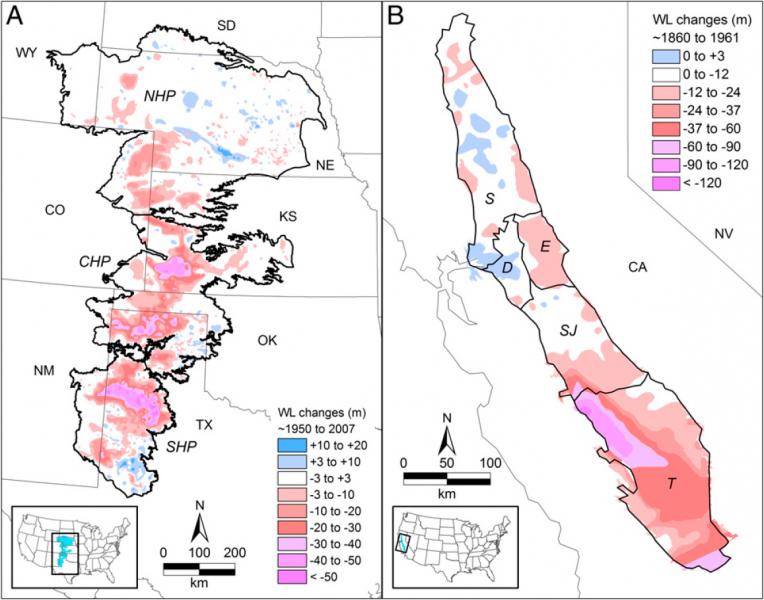You are here
Groundwater Depletion in Texas, California Threatens US Food Security
Primary tabs
submitted by Samuel Bendett

Groundwater depletion has been most severe in the purple areas indicated on these maps of (A) the High Plains and (B) California's Central Valley. These heavily affected areas are concentrated in parts of the Texas Panhandle, western Kansas, and the Tulare Basin in California's Central Valley. Changes in groundwater levels in (A) are adapted from a 2009 report by the U.S. Geological Survey and in (B) from a 1989 report by the USGS.
Homeland Security News Wire - May 29, 2012
The U.S. food supply may be vulnerable to rapid groundwater depletion from irrigated agriculture; for example, from 2006 to 2009, farmers in the south of California’s Central Valley depleted enough groundwater to fill the U.S. largest man-made reservoir, Lake Mead near Las Vegas — a level of groundwater depletion that is unsustainable at current recharge rates
The U.S. food supply may be vulnerable to rapid groundwater depletion from irrigated agriculture, according to a new study by researchers at the University of Texas at Austin and elsewhere.
The study, which appears in the journal Proceedings of the National Academy of Sciences, paints the highest resolution picture yet of how groundwater depletion varies across space and time in California’s Central Valley and the High Plains of the central United States. Researchers hope this information will enable more sustainable use of water in these areas, although they think irrigated agriculture may be unsustainable in some parts.
Proceedings of the National Academy of Sciences (PNAS) -
Groundwater Depletion in Semiarid Regions of Texas and California Threatens U.S. Food Security
http://www.pnas.org/content/109/24/9320.abstract
Press Release - The University of Texas at Austin
Groundwater Depletion in Semiarid Regions of Texas and California Threatens U.S. Food Security
http://www.utexas.edu/news/2012/05/29/groundwater/



Recent Comments